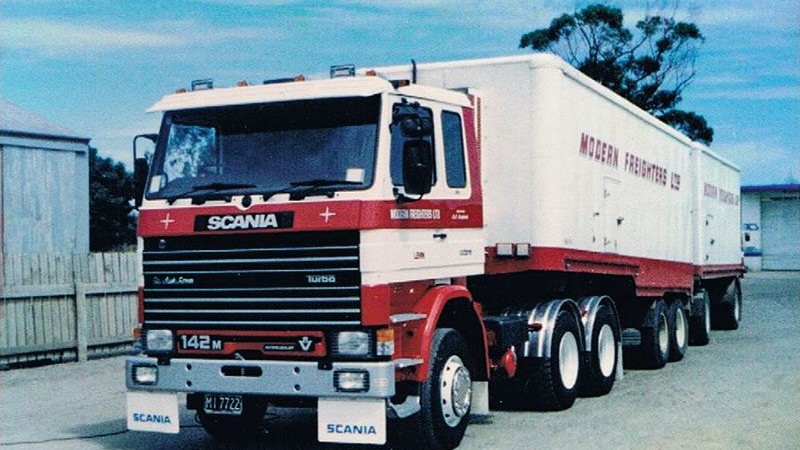
Craig Christensen grew up with a dad who shared his involvement in the transport industry. So it is unsurprising that trucking is Craig’s passion, pastime and profession.
Those who caught our feature on the SEA Electric re-powered Hino 500 of Alsco New Zealand (New Zealand Trucking, May 2022) will remember meeting the driver and enthusiastic ambassador of the electric Hino, Craig Christensen. While we took notes on the Hino, Craig mentioned his passion for the industry extended to scratch-building model trucks. This naturally grabbed our attention, and a plan was hatched to visit his workshop and see first-hand the fruits of his labour.
Craig’s interest was ignited by his father, who was a diesel mechanic and driver. In 1965, when Craig was born, his dad worked for the Levin Dairy Company. At about four or five, Craig began tagging along with his dad to the workshops as his right-hand man.
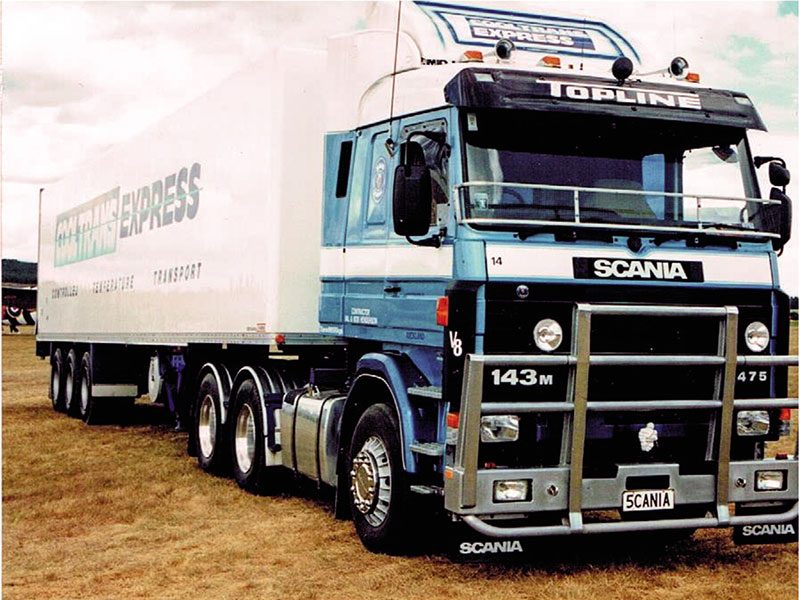
“The company had three Bedfords pulling A-train milk tankers that I was fascinated with, and I would go for rides in those,” explains Craig. In 1972, the Dairy Company ordered a new R-model Mack from Brightwater’s plant in Australia to replace an ageing Hino arctic unit used for the cream run. Unfortunately, a flash flood went through the Brightwater plant before the R-model could be built, so a replacement to fill the order was sent directly from Mack in the USA. It arrived CKD and was assembled as build No.39 at Motor Truck Distributors in Palmerston North.
“When the Mack arrived, we went down to the workshop to see the new rig, and here is me, a little seven-year-old, looking up in awe at this shiny bulldog sitting up atop a big chrome grille. The next thing, Dad hits the air starter, it near shot me through the roof with fright, but that was it, that was me hooked on trucking right at that moment.”
The Dairy Company closed down about a year later, and with that Craig’s father moved across as head diesel mechanic for Modern Freighters. He also increased his part-time, casual relief driving for Newman’s Coachlines, driving at weekends and holidays. With a dad working around all these heavy vehicles, it was only natural a young sprocket would find opportunities to start learning to drive (oh, bring back those days).
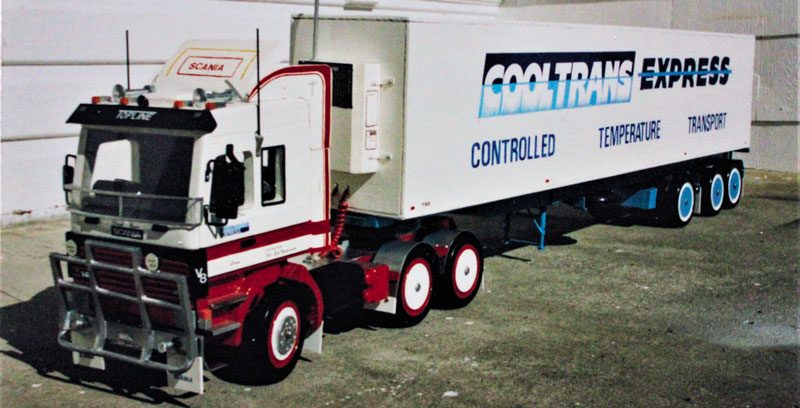
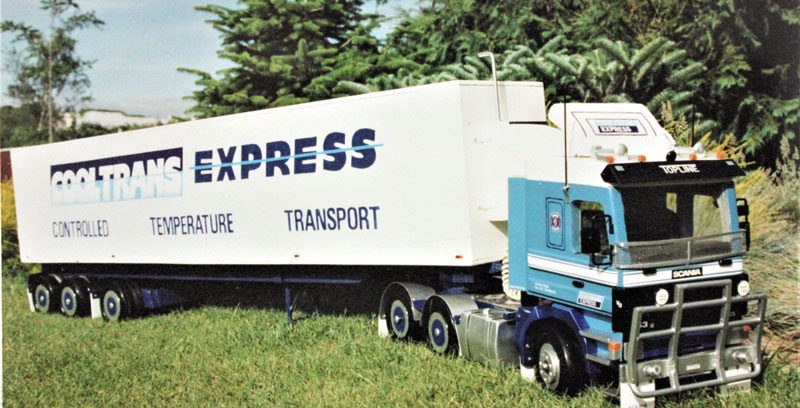
“I started off with sitting on Dad’s lap to steer. Then, as my legs grew long enough, I progressed onto pushing in the clutch. This eventually became me changing gears. So, yeah, the interest was bred by a dad that shared his passion with me.”
For Craig, the fascination with machinery of all shapes and sizes became the catalyst that started his model building. Like many others, it started with kitset aeroplanes, then cars, before transitioning to trucks as they became available on the market. However, before the arrival of plastic kitset trucks in New Zealand, the creative desire to replicate some of his father’s work led Craig to his backyard.
“I would hunt out all sorts – off-cuts of timber, plywood, tin cans and even coat hangers for axles,” laughs Craig. It was Craig’s employment with the Horowhenua Electric Power Board as a fitter welder that helped hone his model-building skillsets. “It was a fantastic place to work – all the tools of the trade, as well as big guillotine presses and lathes, certainly gave me plenty of opportunities to make and machine all sorts of parts, cutting and folding up tin to make wind deflectors as well as scratch-building my own steerable front axles.”
One of Craig’s builds truly stands out – and for a good reason – the big Scania 142. This model is currently sporting the old colours of New Zealand Towel Services (NZTS), who Craig worked for before Alsco of Salt Lake City, Utah, purchased the business. However, since this model was first built in the late 1980s, it has had no less than four liveries adorn its cab, with the white and red of Modern Freighters the first.
“When Dad worked for Modern Freighters, I got to know owner-driver Bob Henderson and spent a lot of time as a passenger with him running linehaul. We would leave his place in Levin loaded with chicken for Auckland, unload, then down to Hutton’s at Te Rapa for sausages, straight back to Wellington to unload, then reload, back to Bob’s at Levin to catch three hours sleep, and jump back into the saddle and do it all over again. Man, we did some Ks in that thing,” explains Craig.
Craig’s 142 truly captures the essence of the mighty Scania. From the basic proportions through to the finer details – the mirror arms, wind kit, and Pacific Aerials Z brackets on either side of the cab for the CB and RT aerials. And the details do not stop there. Look inside the windows to the cab’s interior, and on the engine cover you will find coffee mugs, a log book and the all-important copy of issue No.1 of New Zealand Trucking magazine – everything you need for a linehaul run to Auckland.
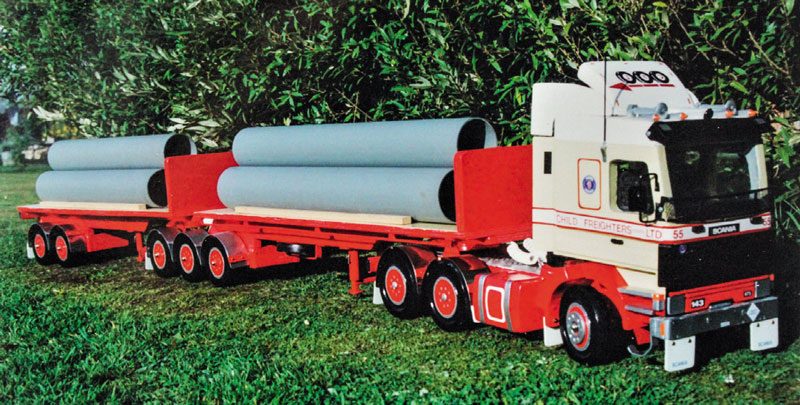
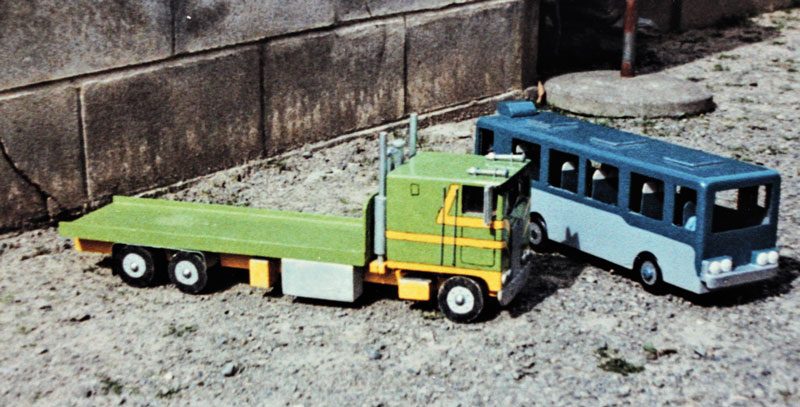
The more you look, the more you see Craig’s ability to envisage beyond an item’s specific purpose to become another form in a corner of his builds. A great example of this: a simple pair of standard quarter-inch gutter bolts with nuts becomes a set of Hadley air horns to adorn the cab’s roof. Brilliance right there.
As we chatted with Craig, it became obvious just how much enjoyment and satisfaction he gets from building something from what most would perceive to be rubbish or waste. As they say ‘one man’s rubbish is another man’s gold’, or model truck in Craig’s case.
“It is quite simple,” he says. “You get a wheel, and then you start building a cab, you work the two together to get the proportions about right… None of it is to perfect scale; it just has to look about right. And always keep your eyes open for items you might be able to use in a build, don’t throw anything away.
“You definitely do not need to spend hundreds of dollars on plastic kitsets to build a model truck – there is one in your backyard right now waiting to be built.”












